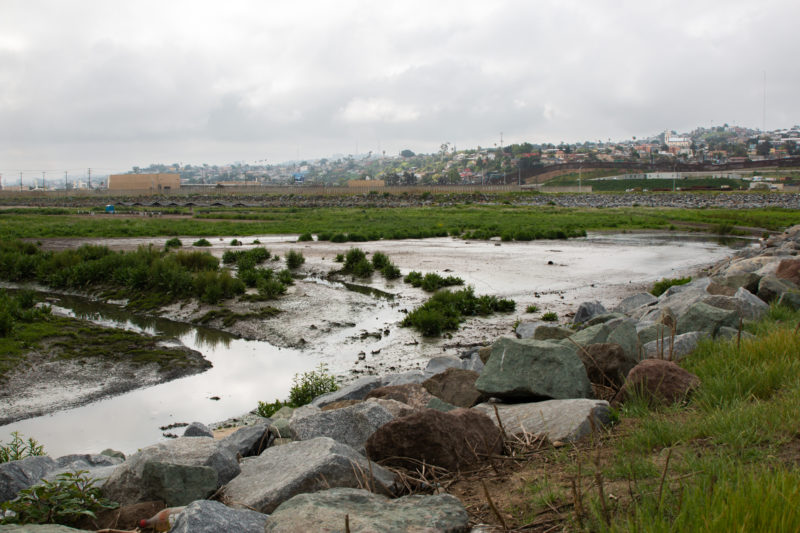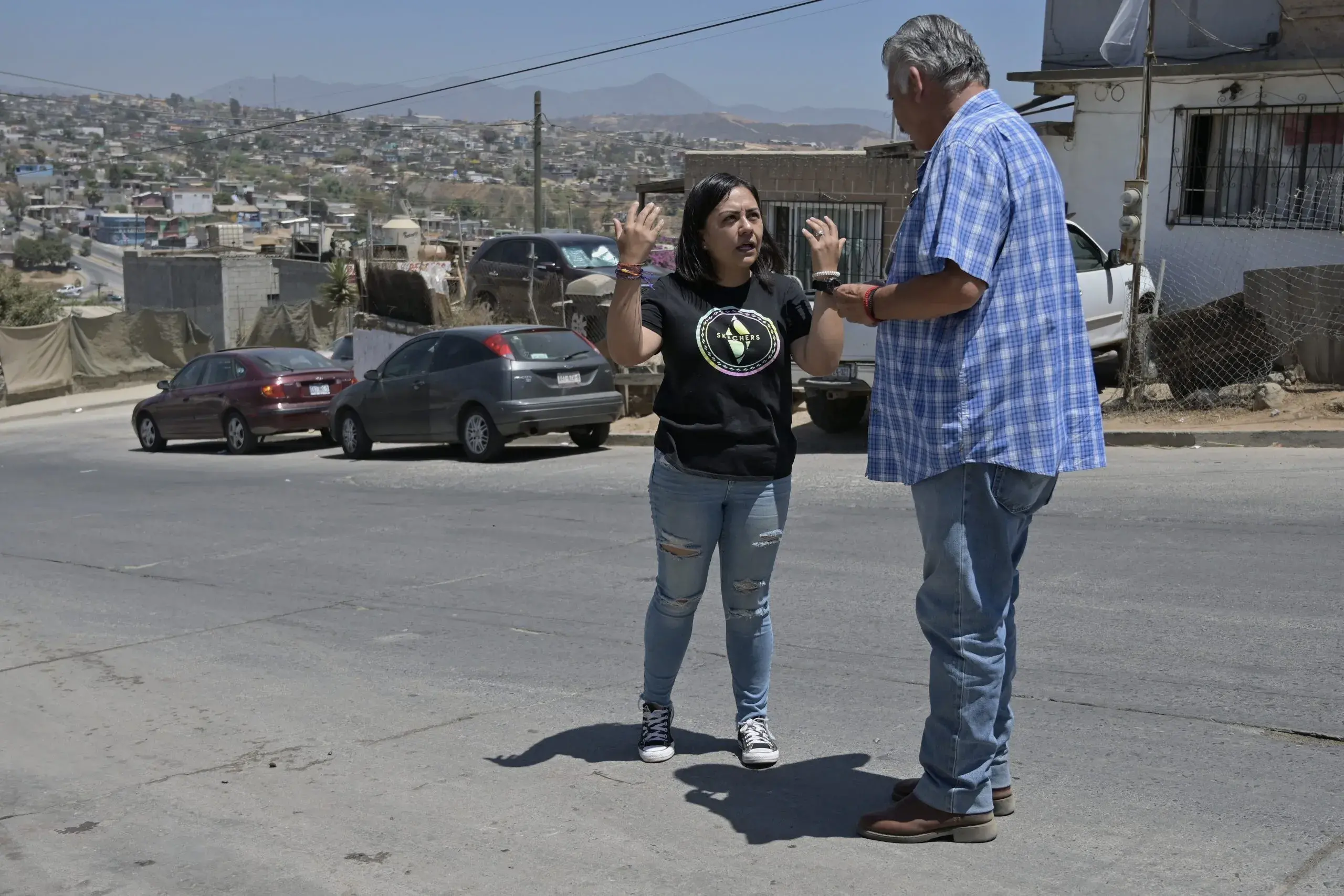
Drought ravaging the western United States is falling even harder on Mexico, especially in places like Ensenada, which is dead last in line for water from the Colorado River that keeps much of the North American west alive.
For Lucero Perez Badillo, that meant going three months without water service.
That stretch finally broke when “la pipa,” the Spanish name for a water delivery truck, came to her home one afternoon in early July. She lives with her two children in a part of Ensenada that normally receives water from the Colorado River, shipped to the seaside tourist city by an aqueduct that crosses the U.S.-Mexico border in Mexicali.
The water truck filled a rooftop storage tank with water from a desalination plant, built in 2018 to provide extra resources in a town that’s drying out. The water from these government trucks, rolled out as part of an emergency drought program, is free. But it doesn’t come often enough, so Lucero Perez Badillo buys the rest she needs, spending an extra $200 dollars per month.
“It’s horrible and we search for other ways to save money to buy water because, well imagine, without water you can’t live,” she said.
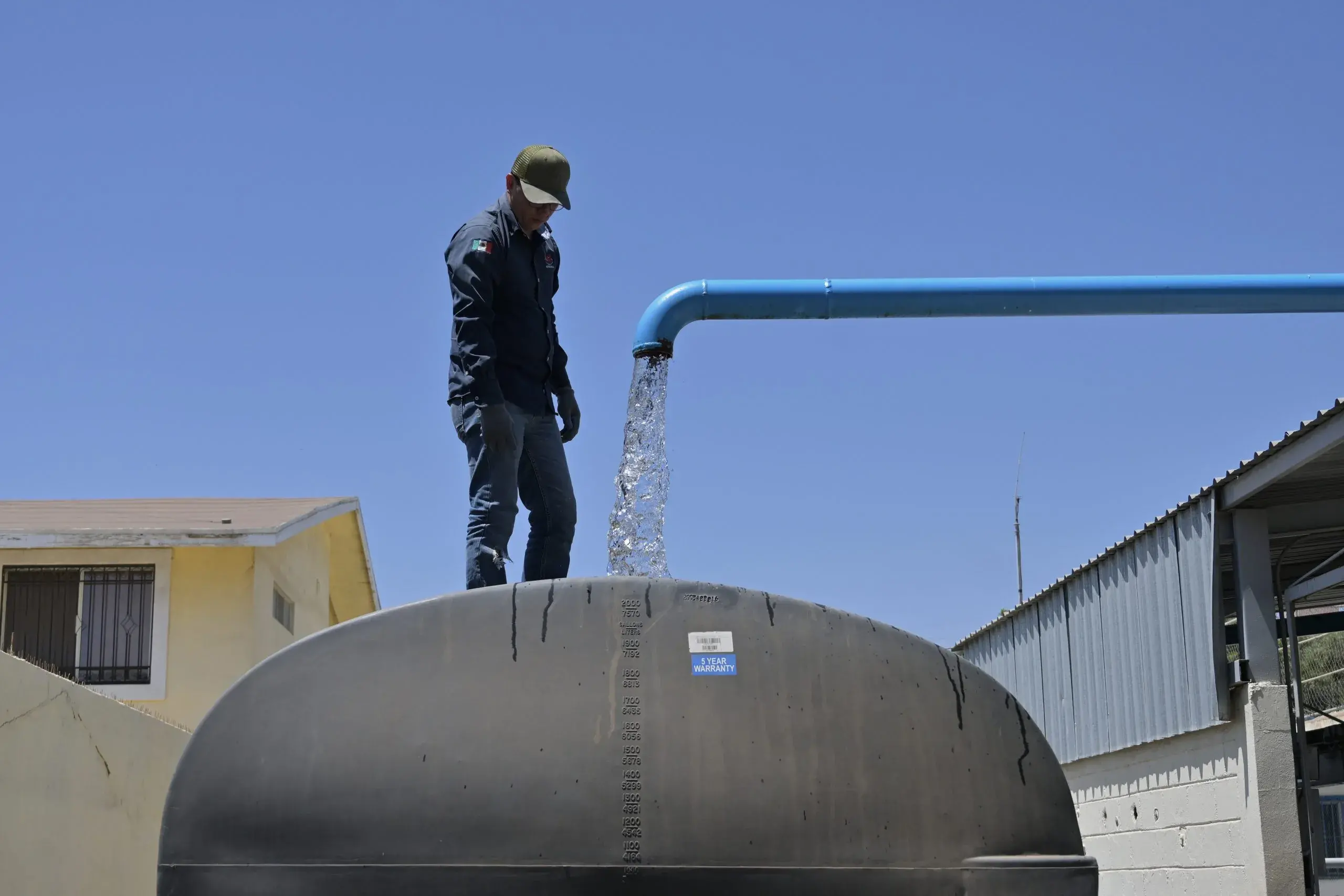
Ensenada has more water sources to choose from than rapidly-expanding Tijuana, also suffering from rounds of water shortages. But poor maintenance, a growing population and lackluster management of those resources means the town is devolving into prolonged water shutoffs resulting in protests and demands for change.
In that three-month stint, the water service returned to Perez Badillo’s home only after the governor of Baja visited Ensenada in an effort to calm growing public outrage over the severity of water outages.
About a month later, Mexico’s federal government took the rare step of declaring a drought emergency for a number of Mexican states, responding to extreme water shortages primarily in the industrial state of Nuevo Leon, but also in Baja. That move grants temporary powers to the feds to take over water supplies that would normally go to agriculture and reroute it to quench thirsty urban areas.
Like in the United States, about 80 percent of the Colorado River water Mexico is entitled to goes to farmers.
“This isn’t sustainable,” said Alfonso Cortez Lara, a researcher in the department of urban studies and environment at COLEF, noting the populations of Mexico’s urban centers have exploded since the establishment of a century-old system of water rights. “We have to do radical things under these kinds of declarations… We need the federal government and the states to focus on managing water demand instead of focusing on looking for more water resources.”
Ensenada’s Water Sources
Ensenada is Baja California’s third largest city, a seaside town with a growing tourism industry tied to the region’s wine country. It sits on groundwater aquifers that used to provide enough water for its agricultural sector with plenty leftover to ship north towards Tijuana.
Today, that reality is reversed.
Groundwater is increasingly unreliable in Ensenada as its aquifers are over-extended from over-tapping by agriculture and increasing urban demand. Ocean water is also seeping into those aquifers, contaminating the remaining resource.

Alonso Centeno Hernández, who heads the State Public Services Commission in Ensenada, said the city still relies on aquifers for up to 25 percent of its water.
Aided by foreign investment, Ensenada became home to Baja’s first desalination plant to make ocean water fit for human use and meet demand. It came online in 2018 and is contracted to provide 40 percent of the city’s water, but it hasn’t met those obligations.
The rest, another 40 percent or so, comes from the Colorado River, which is currently suffering from unprecedented drought.
Booming Tijuana, an hour north of Ensenada, relies almost completely on that river. Coastal Baja’s share of the river is shipped west from Mexicali through bright blue aqueducts, and eventually to Ensenada through a so-called “reverse flow” pipe, named after the pipe that once shipped water north to Tijuana.
But Ensenada probably isn’t getting its full share, because that pipe is old and leaky.
According to Centeno Hernández, that’s because the previous governments didn’t take care of the pipe properly. So now, workers are fixing dozens of leaks, which should solve the immediate problem. Ensenada’s growing population will probably require a second desalination plant, he said.
Like many cities in northern Baja, water scarcity is not new. Rooftops commonly feature water tanks—called Rotoplas after their brand name—for storage.
But this year, some Ensenada neighborhoods have been without water for months. And its water system along with residents’ nerves are breaking down.
How Ensenada Got Here
In early March, the four-year-old desalination plant needed repairs and more than 60 neighborhoods went without water for a few weeks. The state government sent water trucks to fill up Rotoplas, cisterns or buckets for free.

By the end of the month, water service was paused even in wealthier neighborhoods situated in the city’s hills over problems at the desalination plant.
A few months later, angered Ensenadenses over prolonged water cuts hit the streets, blocking traffic to protest outside Ensenada’s State Public Services Commission.
For a city with a history of handling parched summer seasons, this public outburst was new.
Jorge Ojeda, a businessman in the shipping industry, grew up in Ensenada. Never before has he seen protests in the street over water or himself suffering such an outage.
He lives in a wealthier neighborhood called Fraccionamiento Chapultepec, situated high in Ensenada’s hills overlooking the Pacific Ocean, where old money built homes equipped with underground water storage cisterns. The state told Ojeda they couldn’t pump water up to his home.
“It was so bad that sometimes the ladies in our neighborhood went out into the street at night in pajamas looking for a pipa driver willing to deliver water to their houses,” said Cecilia Lencioni, another resident from Fraccionamiento Chapultepec.
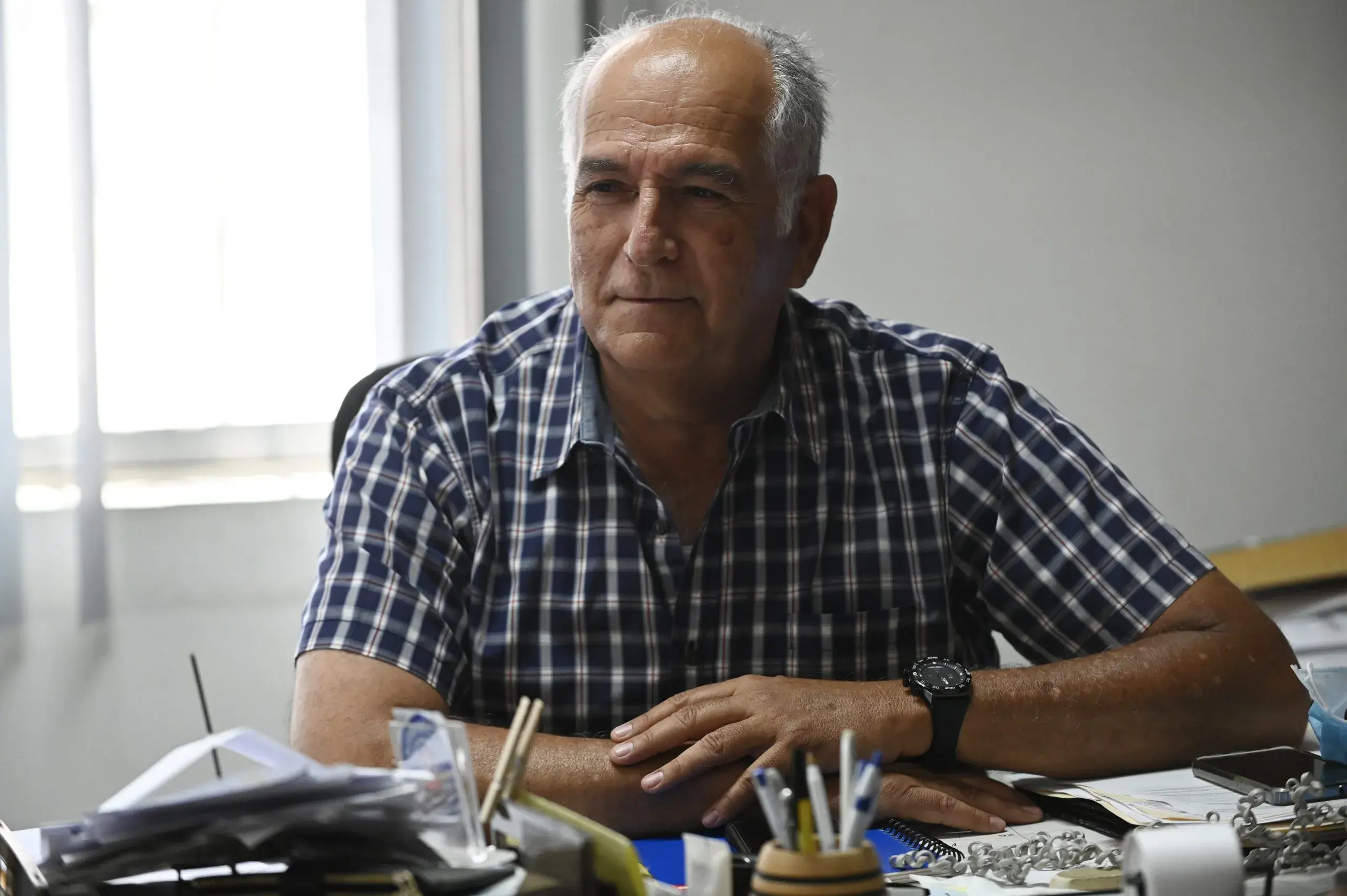
The residents of Fraccionamiento Chapultepec eventually called for a meeting with the director of the state public services commission called CESPE.
“That became a very heated argument between the residents and the director. Then the governor came a week later, and we had water all of the sudden,” said Ojeda.
On May 30, the president of the local business association told local press that the federal government should step in and declare a state of emergency in Ensenada. By June 1, Marina Del Pilar Avila Olmeda, the governor of Baja, appeared in town publicly announcing a new plan to solve Ensenada’s water problem. A week after that, Pilar Avila unveiled a development plan for the entire state that would, in part, address water supply projects.
“The coastal zone can’t totally depend on the (Colorado River) aqueduct,” the governor said. “We have to find other alternatives.”
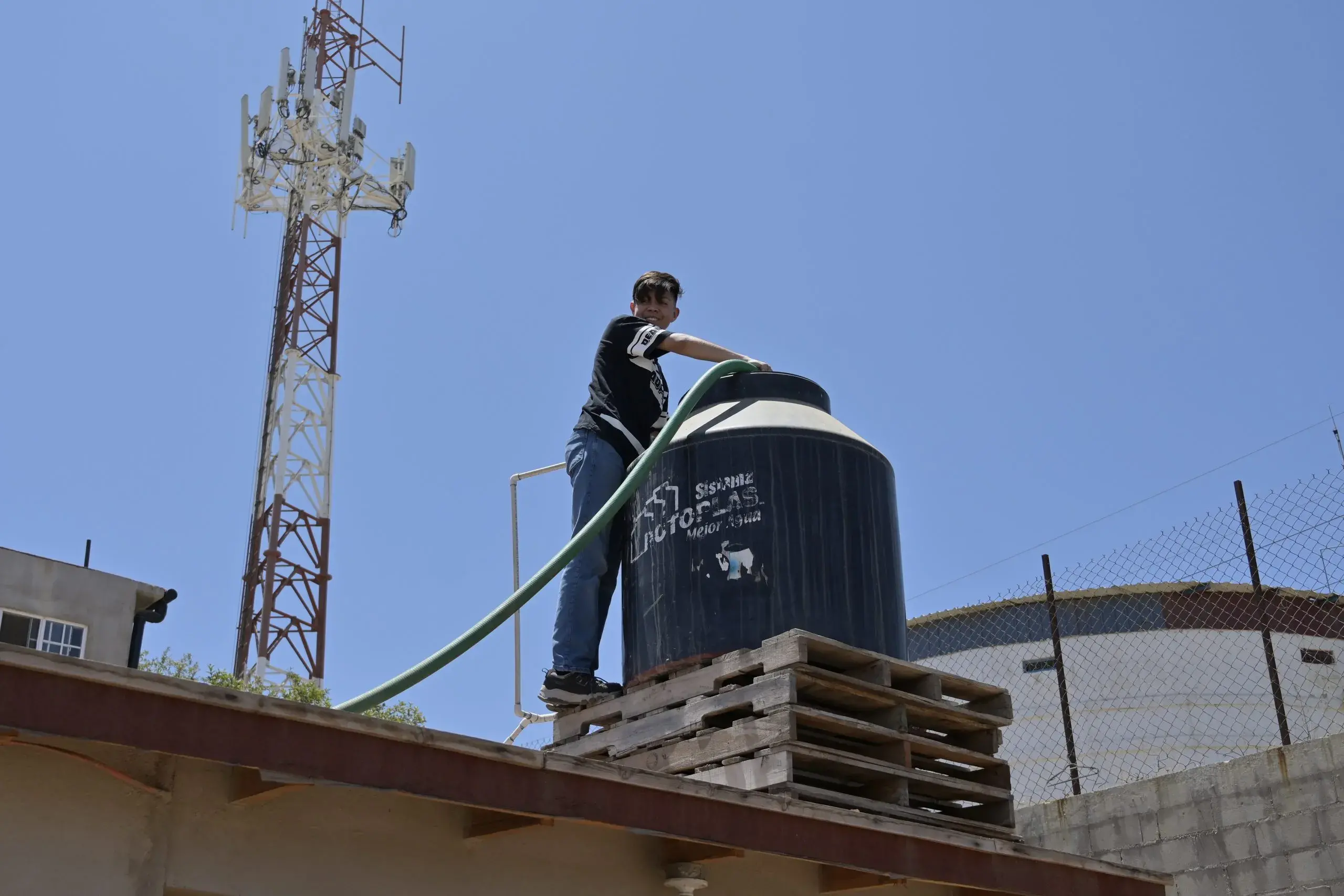
The plan targeted Ensenada, revealing that the aqueduct sending water from Tijuana to Ensenada was in desperate need of repair and that the desalination plant had collapsed and was delivering less than half of what it was contracted to produce.
Tempers in Ensenada were still high. Zeta Tijuana reported neighbors in the Vista Hermosa neighborhood that had been experiencing water cuts for over a week beat up a state public services employee handing out water bills.
By June 10, the governor replaced the head of that department with Centeno Hernández among several other shufflings within water departments throughout the state.
On July 12, the state’s sanitation and water protection agency called SEPROA issued a press release revealing a huge crack on the pipe between Tijuana and Ensenada that transports Colorado River water. Two days later, a substation that powers pumps to get Colorado River water from Mexicali to Tijuana blew, launching a pillar of black smoke into the air.
Finally, that same day, the Mexican federal government declared its drought emergency.
“This emergency declaration, yes, now we have it but a bit too late because we’ve known about this problem since probably 2017,” Cortez Lara, the academic from COLEF, said.
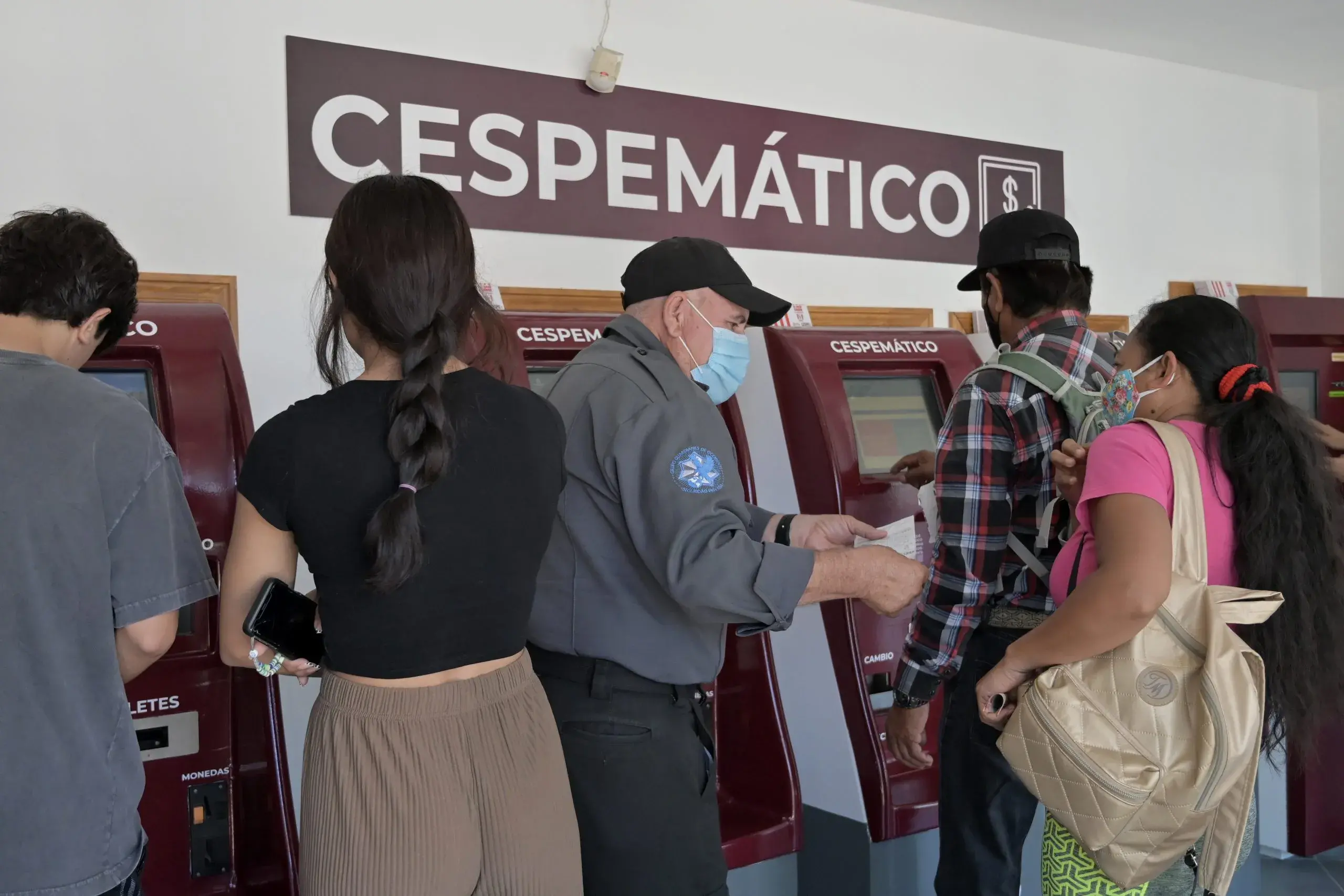
The feds have more leverage to distribute the water, giving priority to urban consumers. But Cortez Lara said that would mean some farmers would have to take land out of production to make more available for cities.
But it seems that option has disappeared from the official Baja government line.
Officials have since tried to quell fears over water scarcity in Ensenada and beyond, saying they’ve fixed many of the problems with leaky water infrastructure and restored much of the stalled water service in a matter of days.
The government, stacked with a governor and water officials from Mexicali, is talking about solving water scarcity concerns by building plants to recycle water instead.
On July 29, Francisco Bernal Rodriguez, Baja’s former secretary of water who now works for Mexico’s federal water commission called CONAGUA, told Tijuanapress.com that taking Mexicali farmers' water is virtually off the table.
“We can’t take the rights (to water) from some and give it to others because […] communities have guaranteed rights to water and we are working to not create conflicts between them,” Bernal Rodriguez told Tijuanapress.com.
And yet, water shutoffs — called “tandeos” in Spanish – continue from Tijuana to Ensenada, bringing more “pipas” on the road.
Reporting on the Tijuana River sewage crisis is produced by Voice of San Diego in partnership with the Tijuanapress.com and with support from The Water Desk at the University of Colorado Boulder and the Pulitzer Center. Our binational, bilingual reporting and photojournalism series illuminates longstanding environmental issues that severely impact quality of life along the border.



